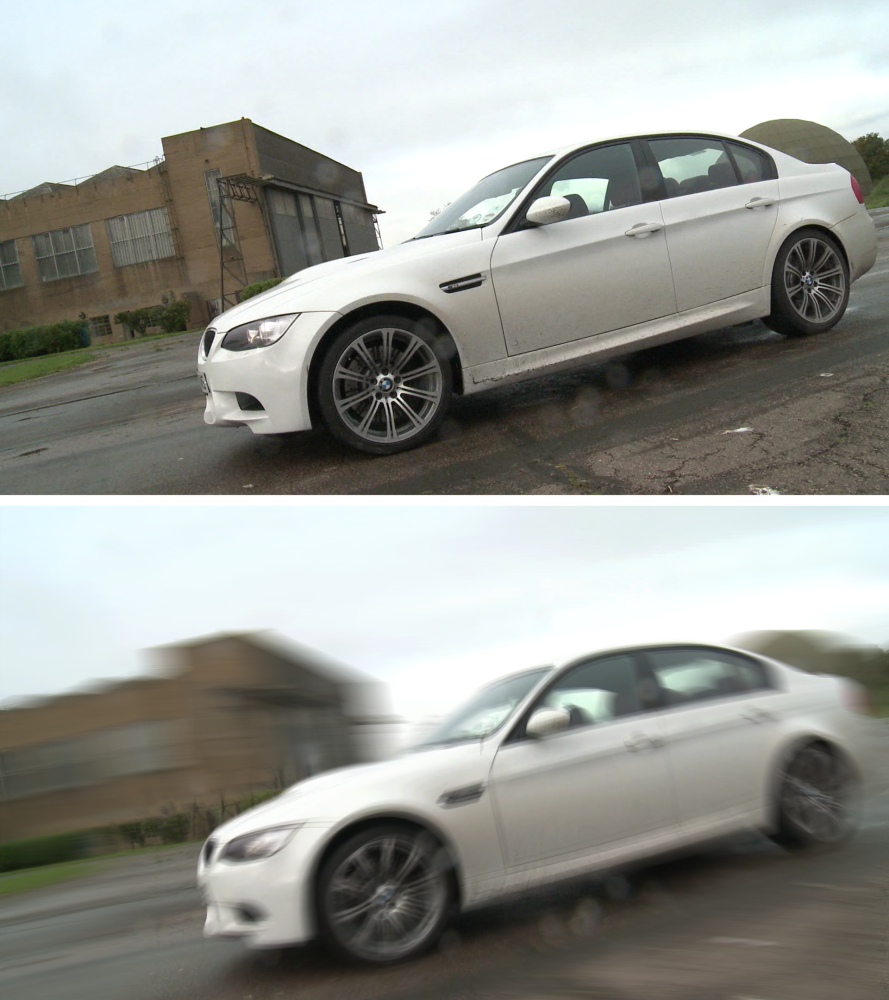Motion Blur uses optical flow techniques to identify movement in the contents of a layer and apply artificial motion blur based on the distance specific features travel from one frame to the next. This can be very useful for animation or for adding exaggerated motion blur to a live action shot. If you have animated the position of a layer, and wish to apply motion blur to that movement, the Automatic Motion Blur should be used.

- Mode: Choose the method used to calculate the blur.
- Off:* disables the blur entirely.
- Comp Settings:* Uses the same settings used by the composite shot, which are found in the Advanced tab of the composite shot Properties. This allows the motion blur to exactly match any 3D motion blur created by animation within the composite shot.
- Custom: Allows you to manually specify the settings used for the effect. If you select Custom, the following settings will become available.
- Shutter Angle: A larger shutter angle will create more motion blur. The shutter angle simulates the amount of time a real camera shutter is open.
- Shutter Phase: Positions the blur in relation to the moving clip. This can be used to offset the blur in front or behind the clip. For realistic motion blur this is best kept to half the value of the shutter angle.
- Samples: Motion blur is constructed by sampling the position of the layer over multiple frames. A higher number of samples will result in a higher quality motion blur. Fewer samples will be faster to render but may introduce visible banding in the motion blur.
Optical Flow
Motion blur is calculated by tracking the movement of every pixel in the image using optical flow techniques. The amount of blur applied to each pixel is based on the speed at which it is moving. These advanced settings let you adjust how the movement in the frame is tracked.
- Window Size: The number of pixels surrounding the current pixel that is scanned to calculate the motion of the current pixel.
- Sigma: A value in the algorithm used for tracking, that alters the way it tracks. Changing the Sigma can affect the result. If the blur is calculated incorrectly, trial and error can be used to see if changing sigma improves results.
- Iterations: The number of times the tracking algorithm is performed. The results of all iterations are averaged, so more iterations will give a more accurate result, but will also take longer to calculate.
- Downsamples: Optical Flow can only track movement smaller than one pixel, so before the tracking algorithm runs, the image must be downsampled. You can create multiple levels of downsampling, and the algorithm will be calculated for each downsample level. More downsamples can improve the results, but will take longer to calculate.
- Start Downsample: By default the tracking algorithm starts with the first downsample, skipping the full resolution image, which makes it less susceptible to being misled by noise in the image. Increasing the Start Downsample can speed up the results, but reduces the resolution of the tracking results, which may negatively impact accuracy.
